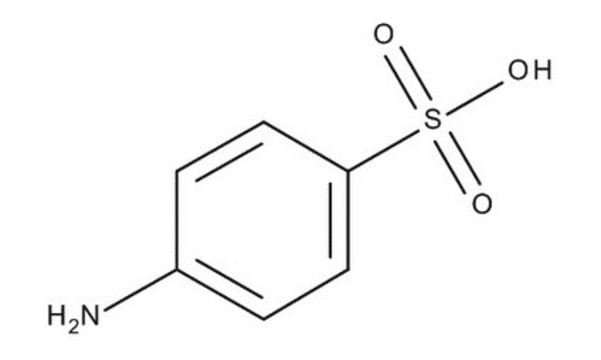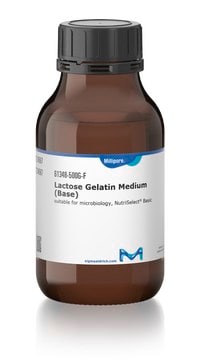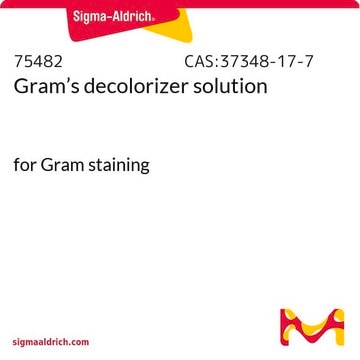39441
Nitrate Reagent B
suitable for microbiology
Sinónimos:
Sulfanilic acid solution, 4-Aminobenzenesulfonic acid
About This Item
Productos recomendados
shelf life
limited shelf life, expiry date on the label
Quality Level
composition
acetic acid (30%), 1000 mL
sulfanilic acid, 8.0 g
technique(s)
microbe id | metabolite detection: suitable
application(s)
agriculture
clinical testing
environmental
food and beverages
pharmaceutical
microbiology
suitability
Enterobacter spp.
Escherichia coli
Neisseria spp.
anaerobic bacteria
coliforms
SMILES string
Nc1ccc(cc1)S(O)(=O)=O
InChI
1S/C6H7NO3S/c7-5-1-3-6(4-2-5)11(8,9)10/h1-4H,7H2,(H,8,9,10)
InChI key
HVBSAKJJOYLTQU-UHFFFAOYSA-N
¿Está buscando productos similares? Visita Guía de comparación de productos
Application
signalword
Danger
hcodes
Hazard Classifications
Eye Dam. 1 - Skin Corr. 1B
Storage Class
8A - Combustible corrosive hazardous materials
wgk_germany
WGK 1
flash_point_f
Not applicable
flash_point_c
Not applicable
ppe
Faceshields, Gloves, Goggles, type ABEK (EN14387) respirator filter
Elija entre una de las versiones más recientes:
¿Ya tiene este producto?
Encuentre la documentación para los productos que ha comprado recientemente en la Biblioteca de documentos.
Los clientes también vieron
Artículos
Vibrios are motile, curved or comma-shaped bacilli and have a single polar flagella with sheet proteins. They are often found in open water, freshwater and saltwater.
There are many other methods of detection to indicate the presence of E. coli. Review common tests and biochemical reactions for this contaminant.
There are many other methods of detection to indicate the presence of E. coli. Review common tests and biochemical reactions for this contaminant.
There are many other methods of detection to indicate the presence of E. coli. Review common tests and biochemical reactions for this contaminant.
Nuestro equipo de científicos tiene experiencia en todas las áreas de investigación: Ciencias de la vida, Ciencia de los materiales, Síntesis química, Cromatografía, Analítica y muchas otras.
Póngase en contacto con el Servicio técnico












